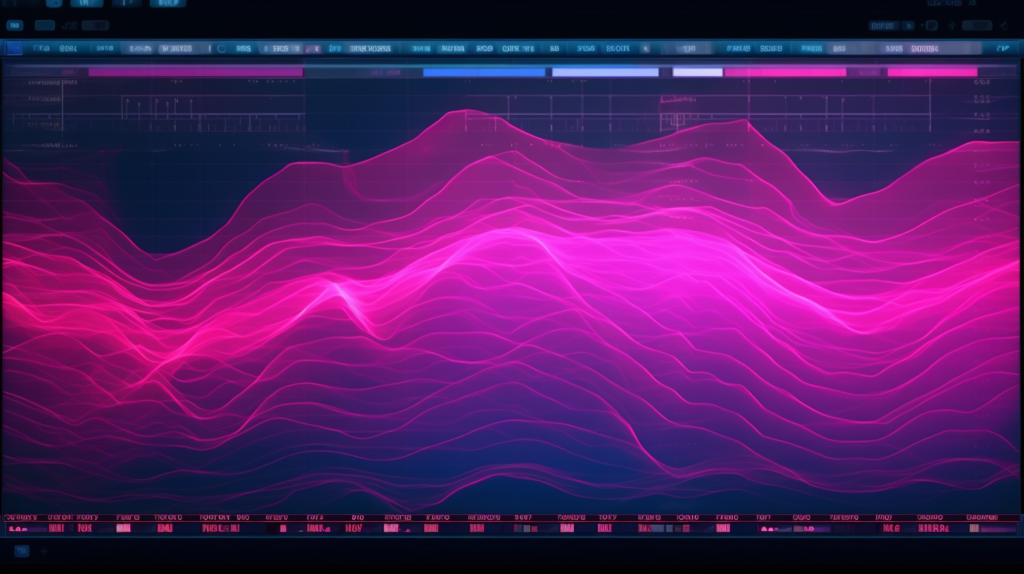Today, we dive into the world of audio mixing, specifically focusing on mixing for different genres. In this extensive guide, we’ll explore various mixing techniques, tips, and tricks that can help you create a balanced and polished mix for any music genre.

Know Your Genre: Understanding the Sound Balance
Before diving into mixing techniques for various music genres, it’s crucial to understand the unique sound balance that defines each genre.
By paying attention to the frequency spectrum, dynamics, and overall tonality, you can create a mix that highlights the genre’s distinct characteristics.
Mixing Techniques for Pop Music
Pop music thrives on catchy hooks and infectious melodies. When mixing pop tracks, focus on these elements:
- Vocals: The vocals should take center stage in pop music. Ensure they are clear, bright, and stand out in the mix.
- Bass: A strong bass line is essential. Make it tight and punchy, without overpowering the rest of the mix.
- Drums: Crisp, clear drums are vital. Accentuate the kick and snare, and keep the hi-hats bright and controlled.
Mixing Techniques for Hip-Hop
Hip-hop relies on a solid foundation of beats, basslines, and powerful vocals. Consider these factors when mixing hip-hop:
- Drums: The kick and snare should be prominent and hard-hitting. Compress and EQ them to add punch and presence.
- Bass: The bass should be deep and powerful, providing a solid foundation for the track. Use sidechain compression to create space between the bass and kick.
- Vocals: Ensure the vocals are clear and upfront, with emphasis on the mid-range frequencies for intelligibility.
Mixing Techniques for Rock and Metal
Rock and metal genres are characterized by their powerful, aggressive sound. To achieve this energy in your mix, focus on these aspects:
- Guitars: The guitar sound is the backbone of rock and metal. Use distortion, compression, and EQ to create a full, aggressive tone.
- Drums: Drums should be punchy and powerful, with emphasis on the kick and snare. Use parallel compression to add depth and power.
- Vocals: Vocals should be clear and present in the mix. Apply EQ and compression to make them stand out against the dense instrumentation.
Mixing Techniques for Electronic Music
Electronic music encompasses a broad range of styles, but some general mixing techniques apply across the genre:
- Synths: Synths are the foundation of electronic music. Use EQ, reverb, and stereo imaging to create depth and space.
- Drums: Drums should be crisp and clear, with a tight, punchy sound. Emphasize the kick and snare, and use sidechain compression to create space for the bass.
- Bass: The bass should be deep and powerful, supporting the synths and drums. Use EQ and compression to create a tight, focused sound.
The Art of EQ: Sculpting the Frequency Spectrum
Equalization (EQ) plays a critical role in music production, allowing you to shape the frequency spectrum and create a balanced mix across different genres. Here are some genre-specific EQ tips:
EQ Tips for Pop Music
Pop music typically has a bright, polished sound. Apply these EQ techniques to achieve this:
- Vocals: Boost the high-mids (2-5 kHz) for clarity and presence. Cut low frequencies (<100 Hz) to reduce muddiness.
- Bass: Boost low frequencies (60-100 Hz) for warmth and depth. Cut low-mids (200-500 Hz) to reduce muddiness and make room for other elements.
- Drums: Boost high frequencies (8-12 kHz) on cymbals and hi-hats for brightness. Apply a slight boost around 200 Hz on the kick for warmth.
EQ Tips for Hip-Hop
Hip-hop mixes often feature powerful low-end elements and clear vocals. Keep these EQ tips in mind:
- Drums: Boost the low frequencies (50-100 Hz) on the kick for punch. Add presence to the snare by boosting the mids (1-3 kHz).
- Bass: Enhance the sub-bass by boosting low frequencies (30-60 Hz). Cut low-mids (200-400 Hz) to reduce muddiness and create space for vocals.
- Vocals: Boost the high-mids (3-6 kHz) for clarity and cut low frequencies (<100 Hz) to reduce muddiness.
EQ Tips for Rock and Metal
Rock and metal mixes often require aggressive, cutting tones. Use these EQ techniques:
- Guitars: Boost the mid-range (1-3 kHz) for a cutting, aggressive tone. Cut low frequencies (<100 Hz) to reduce muddiness and make room for bass and kick.
- Drums: Add punch to the kick by boosting low frequencies (60-100 Hz) and cut low-mids (200-500 Hz) for clarity. Boost the mids (1-3 kHz) on the snare for presence.
- Vocals: Boost the high-mids (3-6 kHz) for clarity and cut low frequencies (<100 Hz) to reduce muddiness.
EQ Tips for Electronic Music
Electronic music often demands a clean, well-defined sound. Apply these EQ techniques:
- Synths: Enhance the high frequencies (8-12 kHz) for brightness and cut low frequencies (<100 Hz) to make room for bass and drums.
- Drums: Boost the high frequencies (8-12 kHz) on cymbals and hi-hats for clarity. Apply a slight boost around 200 Hz on the kick for warmth and depth.
- Bass: Boost the low frequencies (60-100 Hz) for warmth and depth. Cut low-mids (200-500 Hz) to reduce muddiness and create space for other elements.
Mixing Cheatsheet for Producers
| Genre | Vocals | Bass | Drums | Guitars (if applicable) | Synths (if applicable) |
|---|---|---|---|---|---|
| Pop | Clear, bright, upfront | Tight, punchy | Crisp, clear | ||
| Hip-Hop | Clear, upfront | Deep, powerful | Hard-hitting | ||
| Rock/Metal | Clear, present | Punchy, powerful | Full, aggressive | ||
| Electronic | Deep, powerful | Crisp, clear | Depth, space |
By following these tips and tricks for mixing different genres,
you’ll be well-equipped to create polished, professional-sounding mixes across a wide range of musical styles. Remember that each project is unique, so use these guidelines as a starting point and adapt them to suit the specific needs of your track.
The Importance of Dynamics and Compression
Dynamics and compression play a vital role in creating a balanced and cohesive mix across different genres. Compression can help control the dynamic range, enhance the impact of specific elements, and create a more consistent sound.
Compression Tips for Pop Music
- Vocals: Use a fast attack and moderate release time to control vocal dynamics and make them sit well in the mix.
- Bass: Apply gentle compression with a moderate attack and release time to smooth out any inconsistencies and provide a more consistent low end.
- Drums: Use parallel compression to add weight and sustain to the drums without squashing the natural transients.
Compression Tips for Hip-Hop
- Drums: Apply aggressive compression to the kick and snare with a fast attack and release time for a punchy, hard-hitting sound.
- Bass: Use sidechain compression to create space between the bass and kick, allowing both elements to coexist without competing for space in the mix.
- Vocals: Use a moderate attack and release time to control vocal dynamics and maintain clarity and presence in the mix.
Compression Tips for Rock and Metal
- Guitars: Use moderate compression with a fast attack and release time to control dynamics and enhance the aggressive tone of the guitars.
- Drums: Apply parallel compression to the drums for added weight and power, while preserving the natural transients.
- Vocals: Use a fast attack and moderate release time to control vocal dynamics and ensure they cut through the dense instrumentation.
Compression Tips for Electronic Music
- Synths: Apply gentle compression with a slow attack and moderate release time to even out dynamics and create a more cohesive sound.
- Drums: Use sidechain compression to create space for the bass and kick, ensuring a tight, punchy mix.
- Bass: Apply moderate compression with a fast attack and release time to tighten up the low end and create a more consistent sound.
Remember, these tips are just a starting point; always trust your ears and adjust your approach to suit the specific needs of your track. With practice and attention to detail, you’ll soon be crafting genre-specific mixes that impress your listeners and enhance your music production skills.
Happy mixing!





